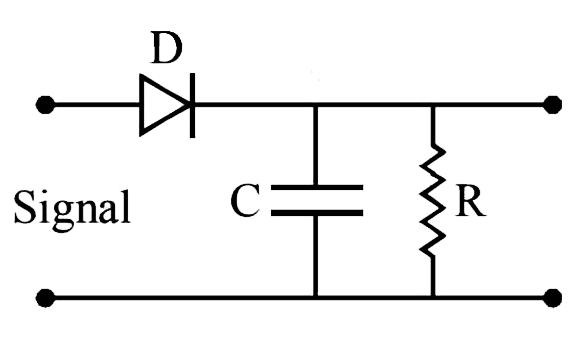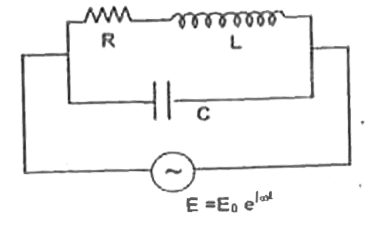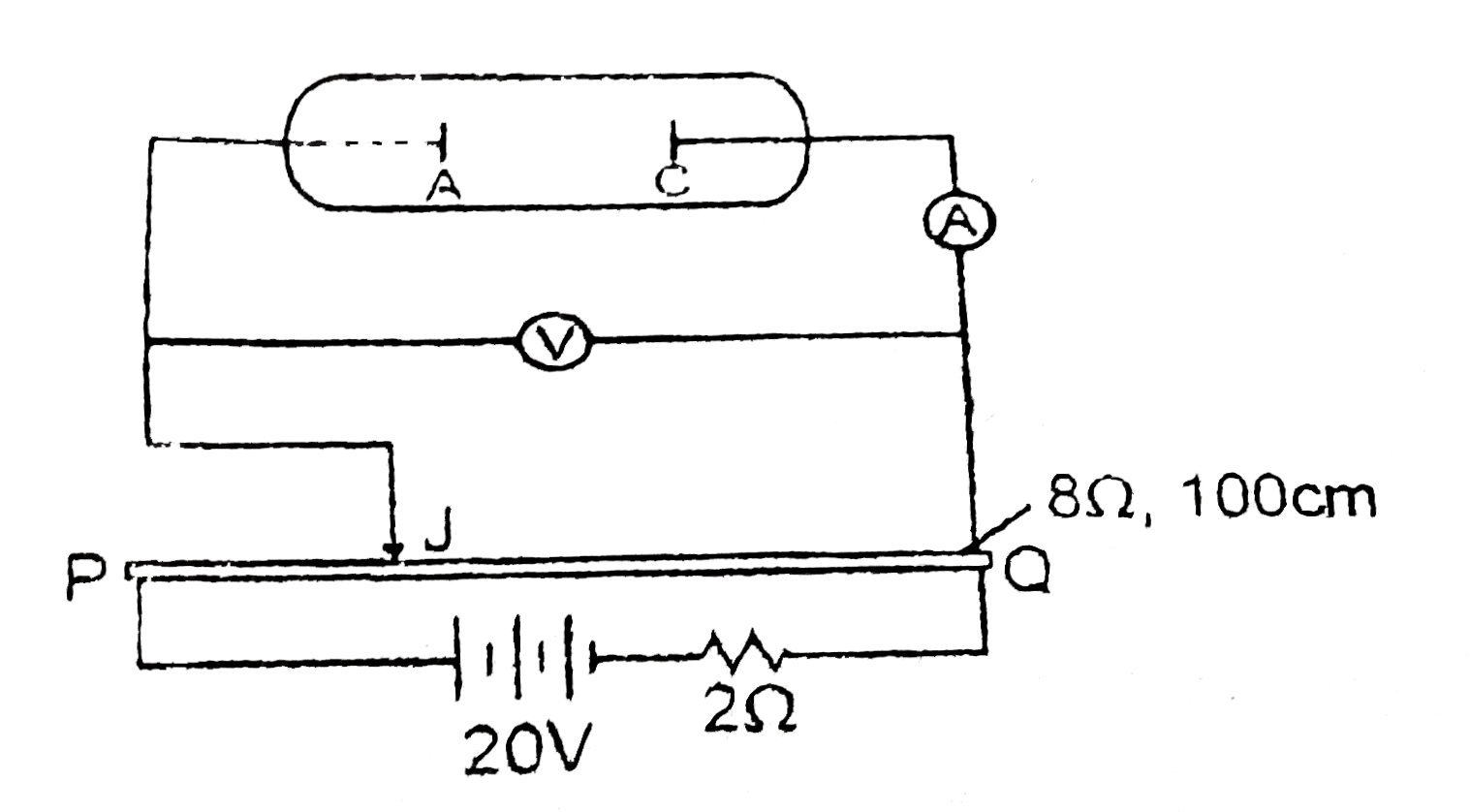Red light of wavelength 5400Å from a distant source modulated wave of 60% modulattion by using a condenser of capacity 250 pF in parallel with a load resistnce 100kΩ. Find the maximum modulated frequency which could be detected by it.
1.89 mm
4mm
1 mm
3mm
The correct Answer is:A
Here, wavelength λ=5400Å=5.4×10−7m,
a=0.80 mm = 8×10−4m, D=1.4m
∴ Distance between first two dark bands on each side of central maximum is the width of central maximum
=2x=2λDd=2×5.4×10−7×1.48×10−4
=1.89×10−3 m =p1.89 m
Topper's Solved these Questions
- SOLVED PAPERS 2018BOOK - DC PANDEYCHAPTER - SOLVED PAPERS 2018EXERCISE - Assertion and Reasons
10 Videos
- SOLVED PAPERS 2018BOOK - DC PANDEYCHAPTER - SOLVED PAPERS 2018EXERCISE - JIPMER
22 Videos
- SOLVED PAPERS 2018BOOK - DC PANDEYCHAPTER - SOLVED PAPERS 2018EXERCISE - JIPMER
22 Videos
- SOLVED PAPER 2017BOOK - DC PANDEYCHAPTER - SOLVED PAPER 2017EXERCISE - Solved papers 2017(JIPMER)
32 Videos
- WAVE OPTICSBOOK - DC PANDEYCHAPTER - WAVE OPTICSEXERCISE - For JEE Advanced E. Integer Type Questions
13 Videos
Similar Questions
A diode detector is used to detect and amplitude modulated wave of 60% modulation by using a condenser of capacity 250 pF in parallel with a load resistance 100kΩ. Find the maximum modulated frequency which could be detected by it
View Solution(a) Photoelectric threshold of metallic silver is λ=3800Å. Ultravilolet light of λ=260 nm is incident on silver surface. Calculate :
(i) the value of work function in joule and eV
Kmax of the emitted photoelectrons
(iii) vmax of the photoelectrons
(b) Ultraviolet light of wavelength 280 nm is used in an experiment on photoelectric effict with lithium (ϕ=2.5eV) cathode. Find
(i) the maximum kinetic energy of the photoelectrons
(ii) the stopping potential
(c) Find the maximum magnitude of the linear momentum of a photelectron emitted when light of wavelength 400 nm falls on a metal (ϕ=2.5eV).
(d) A monochromitc light source of intensity 5 mW emits 8×105 photons per second. This light ejects photoelectrons from a metal surface. The stopping potential for this set up is 2.0V . Calculate the work function of the metal.
(e) The maximum kinetic energy of photoelectrons emitted from a certain metallic surface is 30 eV when imonochromatic radiation of wavelength λ falls on it. When the same surface is illuminated with light of wavelength 2λ the maximum kinetic energy of photo electrons is observed to be 10 eV. Calculate the wavelength λ and determine the maximum wavelength of incident radiation for which photoelectrons can be emitted by this surface.
View Solution
Knowledge Check
A diode detector is used to detect an amplitudennodulated wave of 60% modulation by using a condence of capacity 250 picodarad in parallel with a load resistance 100 kilo obm find the maximum modulated which could be find the maximum modalated frequency which could be detected by it
 A10.62MHzB10.62kHzC5.31MHzD5.31kHz
A10.62MHzB10.62kHzC5.31MHzD5.31kHzConsider the parallel resonant circuit shown in adjacent figure. One branch contains an inductor of inductance L and a small ohmic resistance R, whereas the other branch contains a capacitor of capacitance C. The circuit is fed by a source of alternating emfE=Eoejωt=Eosinωt
The impedance of inductor branch, Z(1)=R+jωL
The impendence of capacitor branch, Z(2) = (1//jomegaC)therefourNetimpedanceZofthetwoparal≤lbranchesisgivenby<br>(1)/(Z)=(1)/(Z_(1))+ (1)/)Z_(2)=(1)/(R+jomegaC<br>=(R-jomegaL)/(jomegaL)(R-jomegaL)+jomegaC=(R)/(R^(2)+omega^(2)+L^(2))+jomega[C-(L)/(R^(2)+omegaL^(2))]<br>Thecurrentflow∈g∈the∘uit<br>I=(E)/(Z)=(E)[(R)/(R^(2)+omega^(2)L^(2))+jomega(C-(L)/(R^(2)+omega^(2)L^(2)))]<br>Forresonance→our,thecurrentμstbe∈phasewiththeappliedemf.Forthis,thereactivecompo≠ntofcurrentshod––bezero,l.e.<br>omega[C-(L)/(R^(2)+omega^(2)L^(2))]=0<br>orC=(L)/(R^(2)+omega_(r)^(2)L^(2))(writ∈gomega_(r)foromegaatresonance)<br>Thisgivesresonantanga––requency<br>omega_(r)=sqrt((1)/(LC)-R^(2)/(L^(2))) At parallel circuit resonance, theimpendence is maximum and current is minimum. Parallel resonant circuit is sometimes called the anti-resonance in order to distinguish from series resonance
QFind the impedance of AC circuit at resonance shown in the adjacent figure
A coil of inductance 100 muH and 60 Omega effective resistance is connected in parallel with a condenser of 100 pF. The resonant circuit so formed is excited from an alternating current source. The frequency of the source is varied until the maximum impendence of the circuit is obtained. The frequency of the generator at which this occurs is approximatelyA(1022πHzB(1072πHzC(1052πHZD(1032πHzThe efficient transmission of signals is achieved by superimposing electrical audio signals on a high frequency carrier wave (the process is known as modulation). When the amplitude of high frequency carrier wave is changed in accordance with the intensity of modulating signal, it is called amplitude modulation. The extent to which the amplitude of carrier wave is changed by the signal is described by modulation factor. It is given as
m=Amplitude change of carrier waveAmplitude of unmodulated carrier wave
Let a carrier wave is represented by
Vc=Vccosωct
Let the modulation factor be m, the maximum change in amplitude of carrier wave is mVc
So, modulating signal can be represented as vm=mVccosωmt
So, the amplitude of modulated wave is =Vc+mVccosωmt
Using this value, the instantaneous voltage of modulated wave is
E=Vccosωct+mVc2cos(ωc+ωm)t+mVc2cos(ωc−ωm)t
The above wave contains three frequencies namely, fc,fc+fm and fc−fm . The frequencies fc+fm and fc−fm are called side band frequencies , USB and LSB respectively.
If modulation factor is 100% , the amplitude change of carrier wave isAEqual to amplitude of modulating signalBEqual to amplitude of unmodulated carrier waveCEqual to amplitude of modulated waveDEqual to zero
A lens of diameter 5.0cm and focal length f=25.0cm was cut along the diameter into two identical halves. In the process, the layer of the lens α=1.00mm in thieckness was lost. Then the halves were put together to form a composite lens. In this focal plane a narrow slit was placed, emitting monochromatic light with wavelength λ=0.60μm. Behind the lens a screen was located at a distance b=50cm from it. Find:
(a) the which of a fringe on the screen and the number of possible maxima,
(b) the maximum width of the slit ∂max at which the fringes on the screen will be still observed sufficiently sharp.
View Solution2.4 mole of H2 sample was taken . In one experiment 60% of the sample was exposed to conitnuous radiations of frequency 4.47×10Hz, of which all he electrons are removed from the atom . In another experiment remaining sample was irradiated with light of wavelength 600Å , when all the electrons are removed from the surface , Calculate the ratio of maximum velocity of the ejected electron in the two cases . Also report the velocity of ejected electron in each case . Assume that ejected electrons does not interact wih any photon . (Ionization potential of H=13.6eV).
View SolutionA plane light wave with wavelength λ=0.65μm falls normally on a large glass plate whose opposite side has a longrectangular recess 0.60mm wide. Using Fig. find the depth H of the recess at which the diffraction pattern on the screen 77cm away from the plate has the maximum illuminance at its centre.

View SolutionThe efficient transmission of signals is achieved by superimposing electrical audio signals on a high frequency carrier wave (the process is known as modulation). When the amplitude of high frequency carrier wave is changed in accordance with the intensity of modulating signal, it is called amplitude modulation. The extent to which the amplitude of carrier wave is changed by the signal is described by modulation factor. It is given as
m=Amplitude change of carrier waveAmplitude of unmodulated carrier wave
Let a carrier wave is represented by
Vc=Vccosωct
Let the modulation factor be m, the maximum change in amplitude of carrier wave is mVc
So, modulating signal can be represented as vm=mVccosωmt
So, the amplitude of modulated wave is =Vc+mVccosωmt
Using this value, the instantaneous voltage of modulated wave is
E=Vccosωct+mVc2cos(ωc+ωm)t+mVc2cos(ωc−ωm)t
The above wave contains three frequencies namely, fc,fc+fm and fc−fm . The frequencies fc+fm and fc−fm are called side band frequencies , USB and LSB respectively.
If modulation factor is 100% , the amplitude change of carrier wave is
View SolutionAn experimental setup of verification of photoelectric effect is shown in the diagram. The voltage across the electrodes is measured with the help of an ideal voltmeter, and which can be varied by moving jockey 'j' on the potentiometer wire. The battery used in potentiometer circuit is of 20 V and its internal resistance is 2Ω. The resistance of 100 cm long potentiometer wire is 8Ω

The photocurrent is measured with the help of an ideal ammeter. Two plates of potassium oxide of area 50cm2 at separation 0.5mm are used in the vacuum tube. Photo current in the circuit is very small so we can treat potentiometer circuit an independent circuit.
The wavelengths of various colours is as follows :
Light1Violet2Blue3Green4Yellow5Orange6RedλinÅ→4000−45004500−50005000−55005500−60006000−650006500−70000.
When other light falls on the anode plate the ammeter reading remains zero till. jockey is moved from the end P to the middle point of the wire PQ. There after the deflection is recorded in the ammeter. The maximum kinetic energy of the emitted electron is
View Solution
